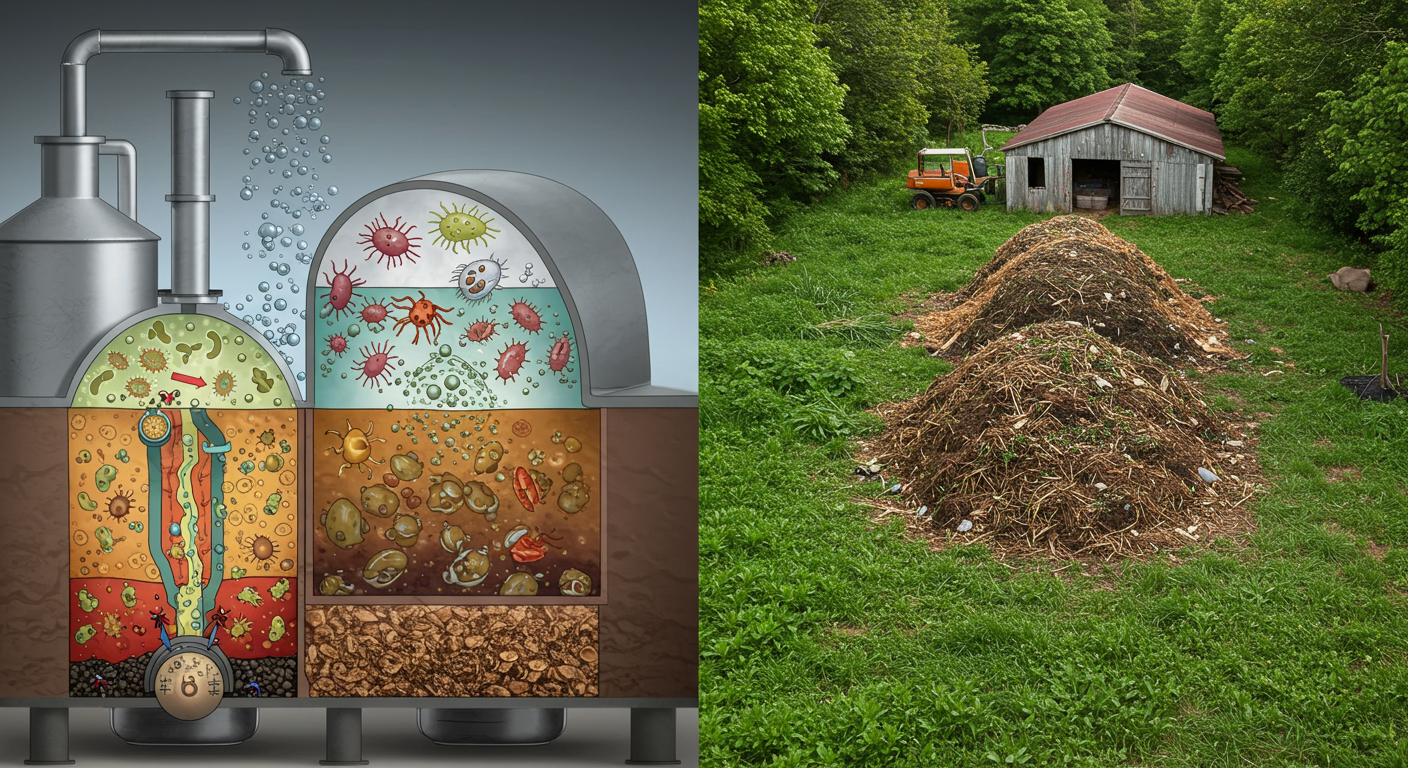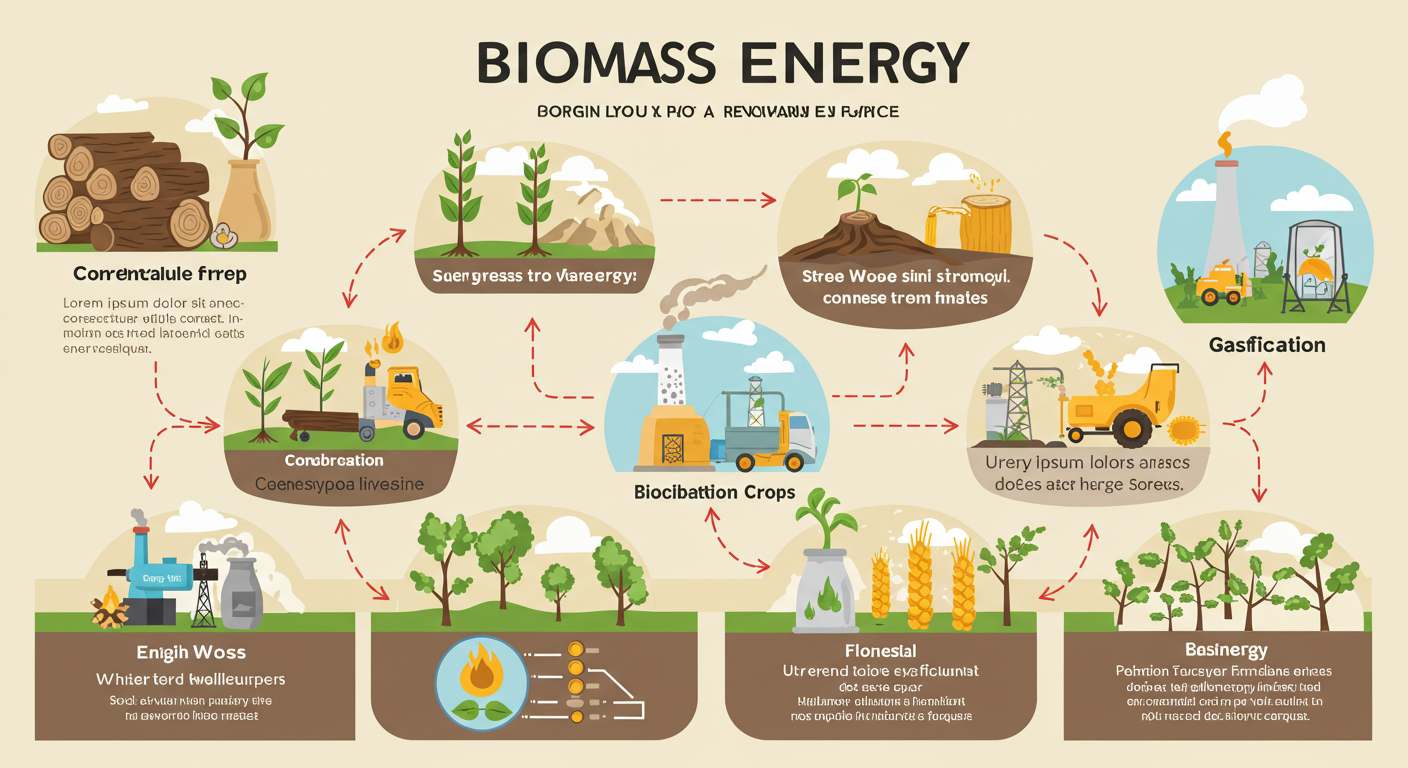Introduction to Renewable Energy in Agriculture
Renewable energy encompasses energy sources that are naturally replenished, such as solar, wind, hydro, and biomass. As climate change and environmental degradation threaten the integrity of agricultural practices, the integration of renewable energy solutions within the sector is becoming increasingly relevant. Traditional farming methods, while historically effective, often rely on fossil fuels that contribute to greenhouse gas emissions. Transitioning to renewable energy not only mitigates these emissions but also promotes sustainable agricultural practices that can ensure food security for future generations.
The application of renewable energy in agriculture can take many forms, including the use of solar panels to power irrigation systems, wind turbines to generate electricity for farm operations, or biogas production from organic waste. By harnessing these renewable sources, farmers can significantly reduce their operational costs and enhance their energy independence. Moreover, utilizing local renewable energy sources can help rural communities thrive economically, creating new job opportunities while sustaining the environment.
Integrating renewable energy into agriculture aligns with global efforts to combat climate change and reinforces the sector’s commitment to sustainable development. Agricultural activities account for a substantial percentage of energy consumption, and shifting towards cleaner energy options is necessary to reduce agriculture’s carbon footprint. Additionally, as the demand for food continues to rise, innovative energy solutions can provide the necessary resources to boost productivity while conserving environmental integrity.
In summary, the growing relevance of renewable energy in agriculture marks a vital shift toward sustainability. It highlights the urgent need for farmers and policymakers alike to adopt innovative strategies that can not only enhance traditional farming practices but also address the pressing challenges associated with climate change. The future of agriculture may well depend on the successful integration of renewable energy sources, paving the way for a more resilient and sustainable food system.
Types of Renewable Energy Sources Used in Agriculture
Renewable energy sources play a vital role in modern agricultural practices, contributing to sustainability and cost-efficiency. Among the most prevalent types of renewable energy utilized in agriculture are solar, wind, biomass, and hydroelectric energy. Each of these energy sources offers distinct applications and advantages, making them suitable for various farming operations.
Solar energy is one of the most widely adopted forms of renewable energy in agriculture. Farmers can harness solar power through photovoltaic panels installed on rooftops or in open fields, providing electricity for irrigation systems, greenhouses, and other farm operations. The benefits of solar energy include reduced electricity costs and lower greenhouse gas emissions, contributing to a more sustainable farming environment. Additionally, solar energy systems can be combined with traditional crops, leading to dual land use.
Wind energy presents another viable option for agricultural applications. Farmers in areas with consistent wind patterns can install wind turbines to generate electricity, either for their own use or for sale to the grid. Wind energy is particularly beneficial in expansive rural areas where high wind speeds are prevalent, allowing farms to reduce reliance on fossil fuels and further minimize operating costs. Moreover, wind turbines can coexist with agricultural practices, such as grazing livestock under the turbines.
Biomass energy, derived from organic materials like crop residues, animal waste, and dedicated energy crops, serves as a renewable energy source that can provide heat and electricity. Utilizing biomass not only helps in waste management but also offers an opportunity for farmers to convert byproducts into energy and create a circular economy within their agricultural systems. This form of energy is particularly appropriate for farms that already produce significant organic waste.
Lastly, hydroelectric energy can be harnessed on farms situated near water sources. Small-scale hydroelectric systems can generate power from flowing water, benefiting operations by providing a reliable energy source. Although the implementation of hydroelectric systems may take considerable planning and investment, their long-term advantages include stable electricity generation and minimal environmental impact.
Benefits of Renewable Energy for Farmers
Renewable energy offers a multitude of benefits for farmers, making it an increasingly attractive option in contemporary agricultural practice. One of the primary advantages is the reduction in energy costs. By harnessing sources like solar, wind, and bioenergy, farmers can decrease their reliance on conventional fossil fuels, which are often subject to price volatility. This transition can lead to significant savings on energy bills, allowing farmers to redirect those funds towards other essential operations or sustainability initiatives.
Furthermore, renewable energy promotes increased energy independence. By generating their own energy, farmers can become less vulnerable to external energy market fluctuations and supply disruptions. This self-sufficiency not only stabilizes operational costs but also contributes to greater economic resilience in agriculture. This independence can be particularly vital in rural areas, where traditional energy sources may be limited or unreliable.
Beyond economic advantages, renewable energy can bring substantial environmental benefits. The agricultural sector is a significant contributor to greenhouse gas emissions, and adopting renewable energy solutions can help mitigate this impact. Transitioning to cleaner energy sources contributes to improved air and water quality, and promotes biodiversity on farmland—all crucial components of sustainable farming practices.
Moreover, integrating renewable energy into agricultural operations presents opportunities for additional income generation. Farmers can capitalize on energy sales by participating in local energy markets or forming partnerships with utility companies. By selling excess energy back to the grid or engaging in community solar projects, farmers can create new revenue streams that bolster economic stability.
By realizing these benefits, farmers enhance not only their operational efficiency but also the overall sustainability and resilience of their agricultural practices. Embracing renewable energy ultimately fosters a more sustainable future for the farming community.
Case Studies: Successful Implementation of Renewable Energy in Agriculture
As the agricultural sector increasingly seeks sustainable solutions to combat climate change and enhance efficiency, numerous farms have successfully integrated renewable energy technologies. These case studies illuminate the diverse range of applications, challenges, and benefits associated with renewable energy in agriculture.
One notable example is a dairy farm in Wisconsin that installed a biogas system to convert animal waste into renewable energy. This farm faced significant challenges related to waste management and energy costs. By implementing anaerobic digestion, the farm not only addressed its waste disposal issues but also produced biogas that powered the farm’s operations. As a result, the dairy farm significantly reduced its carbon footprint and provided a stable energy source, which improved its overall profitability.
Another successful implementation can be found in a vineyard in California that adopted solar energy solutions. Initially faced with high energy bills and fluctuating electricity prices, the vineyard’s owners decided to invest in solar panels. This transition not only alleviated the financial strain of energy expenses but also allowed the vineyard to promote its products as sustainably produced. By harnessing solar power for irrigation and temperature control in wine production, the vineyard exemplified how renewable energy can enhance both sustainability and brand image.
Additionally, a vegetable farm in the Netherlands incorporated wind turbines to supplement its energy needs. After recognizing that traditional energy sources were hindering operational efficiency, the farm invested in wind energy systems. Although the initial investment required careful planning and overcoming regulatory hurdles, the long-term benefits included lower energy costs and resilience against future price increases. This case illustrates the potential for wind energy to play a vital role in sustainable agricultural practices.
These examples highlight the potential of renewable energy solutions to improve operational efficiency, reduce costs, and support sustainability in agriculture. By studying these successful implementations, other farmers can gain insights and motivation to embark on their own journey towards renewable energy adoption.
Challenges and Barriers to Adoption
Transitioning to renewable energy in agriculture presents various challenges that farmers must navigate to ensure a sustainable future. One of the primary obstacles is financial constraints. The initial investment required for renewable energy systems, such as solar panels or wind turbines, can be substantial. Many farmers, particularly those operating smaller farms, often face tight margins that make it difficult to allocate funds towards such investments. Additionally, while renewable energy may reduce long-term costs, the upfront capital required can deter interested farmers from pursuing these options.
Another significant barrier is the lack of technical expertise among farmers. Implementing renewable energy solutions requires a certain level of knowledge about the technologies involved. Many farmers may not have the skills or training necessary to operate and maintain these systems effectively. This gap in knowledge can lead to misuse or inefficiency, further discouraging the adoption of renewable energy. Consequently, developing educational programs and resources to enhance technical skills within the agricultural community is crucial.
Regulatory hurdles also pose a challenge to the adoption of renewable energy. Farmers often encounter complex regulations and permitting processes that can delay or complicate the installation of renewable energy systems. These bureaucratic obstacles can lead to uncertainty and frustration, deterring farmers from pursuing alternative energy options. Simplifying regulatory frameworks and providing clear guidance on compliance can help alleviate these concerns.
Lastly, access to technology can be a limiting factor. In some regions, farmers may be geographically isolated from resources and support systems necessary for the implementation of renewable energy solutions. Improved infrastructure and access to information can play a vital role in bridging this gap. Addressing these challenges through comprehensive support systems and resources is essential for facilitating the transition to renewable energy in agriculture, fostering a more sustainable agricultural landscape.
Government Policies and Incentives for Renewable Energy in Agriculture
Government policies and incentives play a pivotal role in encouraging renewable energy adoption within the agricultural sector. Various initiatives have been put in place to provide financial support and resources for farmers looking to transition to more sustainable practices. These measures typically include tax breaks, grants, and subsidies designed to alleviate the financial burden associated with investing in renewable energy technologies.
One prominent avenue for financial assistance is through direct grants provided by federal and state agencies. For instance, the USDA’s Rural Energy for America Program (REAP) offers grants and loan guarantees to agricultural producers for renewable energy systems and energy efficiency improvements. Applications for these programs often highlight the potential financial return on investment, making it easier for farmers to justify the switch to renewable sources.
In addition to grants, numerous tax incentives exist to further encourage the transition. Farmers can access tax credits for the installation of solar, wind, and biomass energy systems. These tax incentives significantly lower the upfront costs associated with renewable energy projects, making it more feasible for farmers to adopt green technologies. Furthermore, many state governments have developed their own sets of incentives, instigating competition and innovation among utility providers to offer favorable rates for renewable energy procurement.
Governmental organizations, such as the Environmental Protection Agency (EPA) and the Department of Energy (DOE), also play an instrumental role in promoting sustainable agricultural practices. They offer technical assistance, educational programs, and extensive research on renewable technologies tailored specifically for the agricultural sector. By providing invaluable resources and support, these organizations help cultivate a more environmentally conscious farming community, which can lead to enhanced sustainability and reduced reliance on fossil fuels in agriculture.
Future Trends in Renewable Energy for Agriculture
The agricultural sector is consequently evolving with advancements in renewable energy technologies, bringing forth significant opportunities for enhancing sustainability and efficiency. One promising development is agrivoltaics, which combines agricultural production with solar energy generation. This innovative approach allows farmers to utilize the same land for both crops and solar panels. By doing so, agrivoltaics maximizes land use while providing a renewable energy source, contributing to a sustainable farming model. Research shows that crops grown under solar panels can benefit from reduced heat stress and improved moisture retention, leading to higher yields.
Another important trend lies in the enhancement of battery storage solutions. As renewable energy sources such as solar and wind are inherently variable, emerging battery technologies are critical for ensuring a consistent power supply on farms. New developments in battery storage enable farmers to store surplus energy generated during peak production times for later use, effectively addressing the intermittency challenge. Various companies are now working on advanced lithium-ion batteries and innovative flow battery options that could offer longer lifespans and improved energy density, aligning perfectly with the growing demands of precision agriculture.
Moreover, innovations in energy efficiency are set to revolutionize agricultural practices. The integration of smart technologies, such as Internet of Things (IoT) devices, enables farmers to monitor energy consumption and optimize their use of renewable resources. Data-driven farming solutions contribute to reducing energy waste, particularly in machinery and irrigation systems. By making informed decisions based on real-time data, agricultural producers can lower operational costs while simultaneously reducing their carbon footprint.
Overall, these trends in renewable energy—agrivoltaics, battery storage solutions, and energy efficiency innovations—are pivotal in shaping the agricultural landscape. As the sector increasingly embraces these technologies, the synergy between renewable energy and agricultural practices will contribute to a more sustainable and resilient future.
Creating a Roadmap for Transitioning to Renewable Energy
The transition to renewable energy in agriculture is a multifaceted undertaking that requires careful planning and execution. A comprehensive roadmap can assist farmers in making this transition more systematically and effectively. The first step is to assess the energy needs specific to each agricultural operation. This involves evaluating existing energy consumption patterns, identifying peak usage times, and determining potential savings from renewable energy sources. Understanding these factors is crucial for planning a sustainable energy strategy tailored to the farm’s unique requirements.
Once energy assessments are complete, the next step is the selection of suitable renewable technologies. Options may include solar panels, wind turbines, biomass systems, or geothermal energy, depending on factors such as geographic location, available resources, and budget. Each technology has its advantages; for instance, solar energy can be harnessed in sunny regions, while wind energy may be more viable in areas with higher wind speeds. Farmers should consider pilot projects that allow small-scale testing of these renewable technologies before full implementation.
Financial planning is a critical component of this roadmap. Transitioning to renewable energy technologies often involves substantial upfront costs, yet various grants, subsidies, and financing options are available to mitigate these expenses. Farmers should research these financial resources thoroughly and consider consulting with financial experts specialized in agricultural practices. This ensures that the investment in renewable energy aligns with their long-term financial goals.
Finally, implementation strategies should include timelines, benchmarks, and performance metrics to monitor progress during the transition. Gathering resources such as guides, case studies, and mentorship opportunities can empower farmers while navigating through this process. By adopting a structured approach to transition, agricultural producers can effectively harness renewable energy, reducing their carbon footprint and leading the way towards sustainable farming practices.
Conclusion: Embracing a Sustainable Energy Future in Agriculture
As we have explored throughout this blog post, the integration of renewable energy in agriculture presents a multitude of advantages that can significantly transform the farming landscape. With rising global temperatures and an increasing emphasis on sustainable practices, it is imperative for farmers to consider the various renewable energy solutions available. Solar, wind, and bioenergy are not only cost-effective alternatives to traditional energy sources, but they also play a pivotal role in reducing greenhouse gas emissions associated with agricultural activities.
Transitioning to renewable energy can lead to enhanced energy independence for farmers, lowering operational costs while fostering a resilient agricultural system. The implementation of these sustainable energy practices positions farmers as active participants in combating climate change. By adopting solar panels, wind turbines, or biofuel mechanisms, agricultural operations contribute to a cleaner environment, ensuring the longevity of natural resources for future generations.
Moreover, stakeholders in the agricultural sector, including policymakers, agricultural organizations, and researchers, have a vital role in supporting and promoting these renewable energy initiatives. Advocacy for incentives, investments in research and development, and the establishment of educational programs are essential steps toward a sustainable energy future in agriculture. By fostering collaboration and sharing success stories, we can encourage adoption across the board, thereby enhancing the agricultural industry’s ability to adapt to environmental changes while boosting productivity.
In conclusion, embracing renewable energy is not merely an option but a necessity for the agricultural sector. As we move forward, let us encourage open dialogue and actionable frameworks that facilitate the integration of renewable energy solutions. Together, we can pave the way for a sustainable future, ensuring that agriculture thrives in harmony with the environment while addressing the pressing challenges of climate change.





